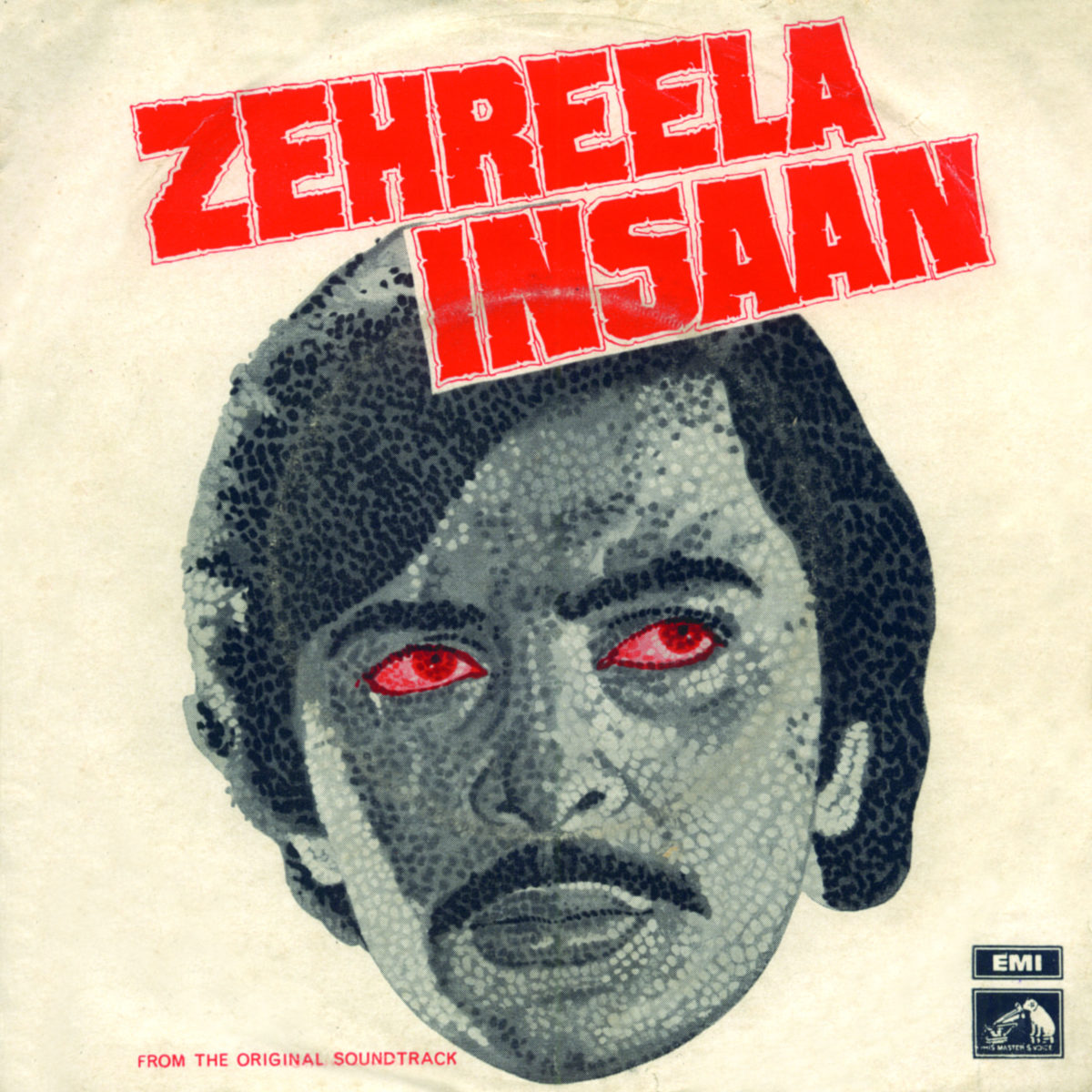O Hansini …

Singer: Kishore Kumar Lyrics: Majrooh
Film: Zehreela Insaan (1974) Producer: Virendra Sinha
Director: S.R.Puttana Kanagal
–
Zehreela Insaan was S R Puttanna Kanagal’s remake of his Kannada hit Naagara Haavu based on a Talukina Ramaswami Subba Rao novel of the same name. That film made a star out of Vishnuvardhan but the Hindi remake directed by Kanagal himself didn’t fare as well, making things a bit difficult for Rishi Kapoor. The most cherished artifact of the film, however, has been this Kishore gem, which, as rumour would have it, was originally meant to be a Shailendra Singh song.
This is a rather short song (a 2-line mukha.Daa and two 2-line a.ntaraas, minus all the repetitions for musical effect) and Majrooh employs simple Hindi and a handful of metaphors for a lover’s call to his beloved. Pancham chooses to give the song a melody in a minor scale, a scale usually associated with sadness (although there are exceptions). The seed for the melody in the mukha.Daa seems to be Michelle Legrand’s theme for the 1971 film Summer of ’42. While Anu Malik used the same source to a greater extent in his prelude to tere dar par sanam in Phir Teri Kahani Yaad Ayee, Pancham limits his quote to “o ha.nsinii.”
The prelude opens with vibes, trembling strings and an ethereal female chorus. As the voices fade away, a short motif on the sitar makes its appearance and dominates the track even as the female chorus returns. The motif gives way to short phrases from the string section that bring up the tail of the free-form prelude before strums of Fminadd9 on the guitar introduce the rhythm for the last section. All this sets you up, if you will, for a visual of a slow drive nearing the end of a dark tunnel into a splash of white light. The alto saxophone and strings exchange phrases before leading in to Kishore’s vocals. The composite percussive backing also makes an appearance with Kishore while the acoustic rhythm guitar and the omnipresent string section provide backing and harmonic complement respectively. The percussive arrangement is enough reason for someone to remaster and clean up this track –- what exists right now is a barely passable copy with inconsistent murky backing (you can barely hear the bass guitar) and a flaky stereo mix. As it stands right now, the rhythm sounds like a composite of the maadal, the shaker, a hand drum and interestingly miked rimshots.
If you listen carefully you can hear a violin playing out the melody as Kishore sings the words (during the mukha.Daa and when he opens each a.ntaraa, for instance).
Interplay between trumpet and accordion dominates the first interlude, which comprises an improvisation on the melody of the mukha.Daa. The acoustic guitar and shakers dominate the rhythmic component. A melodic riff played out on a hammered dulcimer (it sounds like the santoor with some interesting miking, but I can’t really be sure) followed by a turnaround phrase played out on the strings brings up the tail end of the interlude.
The second interlude revisits the prelude as it begins with the hammered dulcimer and acoustic guitar stabbing out an Fminadd9 while the shaker provides consistent percussive backing. A fading wafting flute-toned riff is tossed into the mix. The accordion plays out a short melodic riff, which is notable for introducing the tritone, but this is probably an improvisatory move and not a musical statement of any kind (that it helps the ethereal aura of the song is a welcome side-effect). The strings join in, and then the interlude ends just as the first one did (the dulcimer and then the sweeping run of the strings to end on the fifth).
Both a.ntaraas (melodically beginning on the seventh degree and ending on the tonic) use the composite percussive backing, an acoustic guitar providing chordal backing and another providing melodic fills between Kishore’s lines. All this is in addition to the continued harmonic contribution from the string section. Given the overabundance of the string section in Bollywood music one wishes Pancham had tried to eschew them even more than he did (chho.Do sanam from Kudrat and “har ek raasataa…” from Ameer Aadmi Gharib Aadmi being just two of the very few examples where the string section was on holiday).
Pancham’s devices are evident in the melodic construction and chordal arrangement of the mukha.Daa. The song is primarily in a minor key (Fm) but the melody in the mukha.Daa switches to a major key with “merii ha.nsinii.” The melodic liberties, the composite rhythm and the instruments involved augment this song’s value beyond a simple marriage of lyrics and melody. It would have been a pleasure to have seen the development of the song from scratch to finished product, if only to see how the different components were introduced and became an integral part of the result.
George Thomas
Panchammagic.Org

